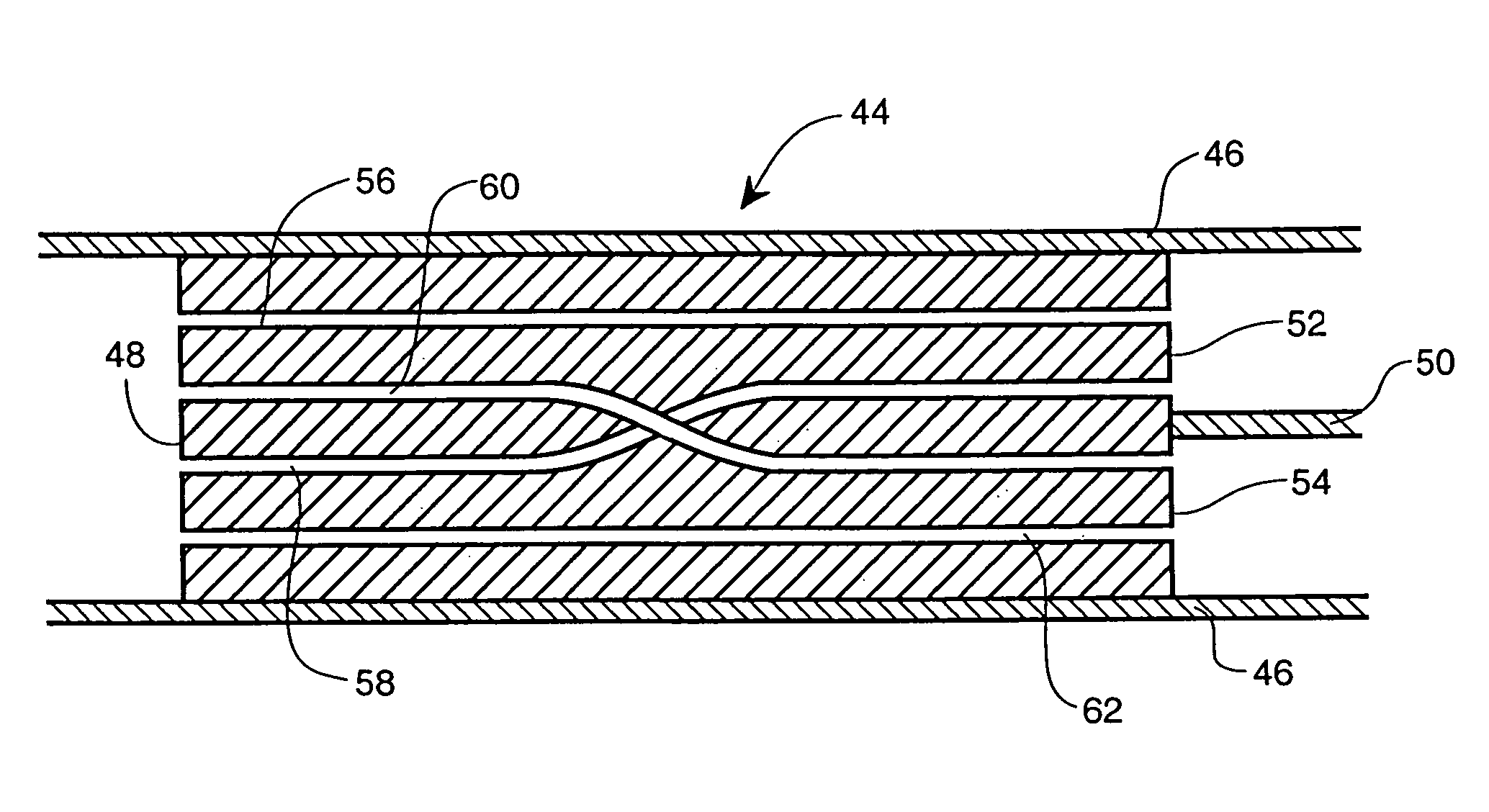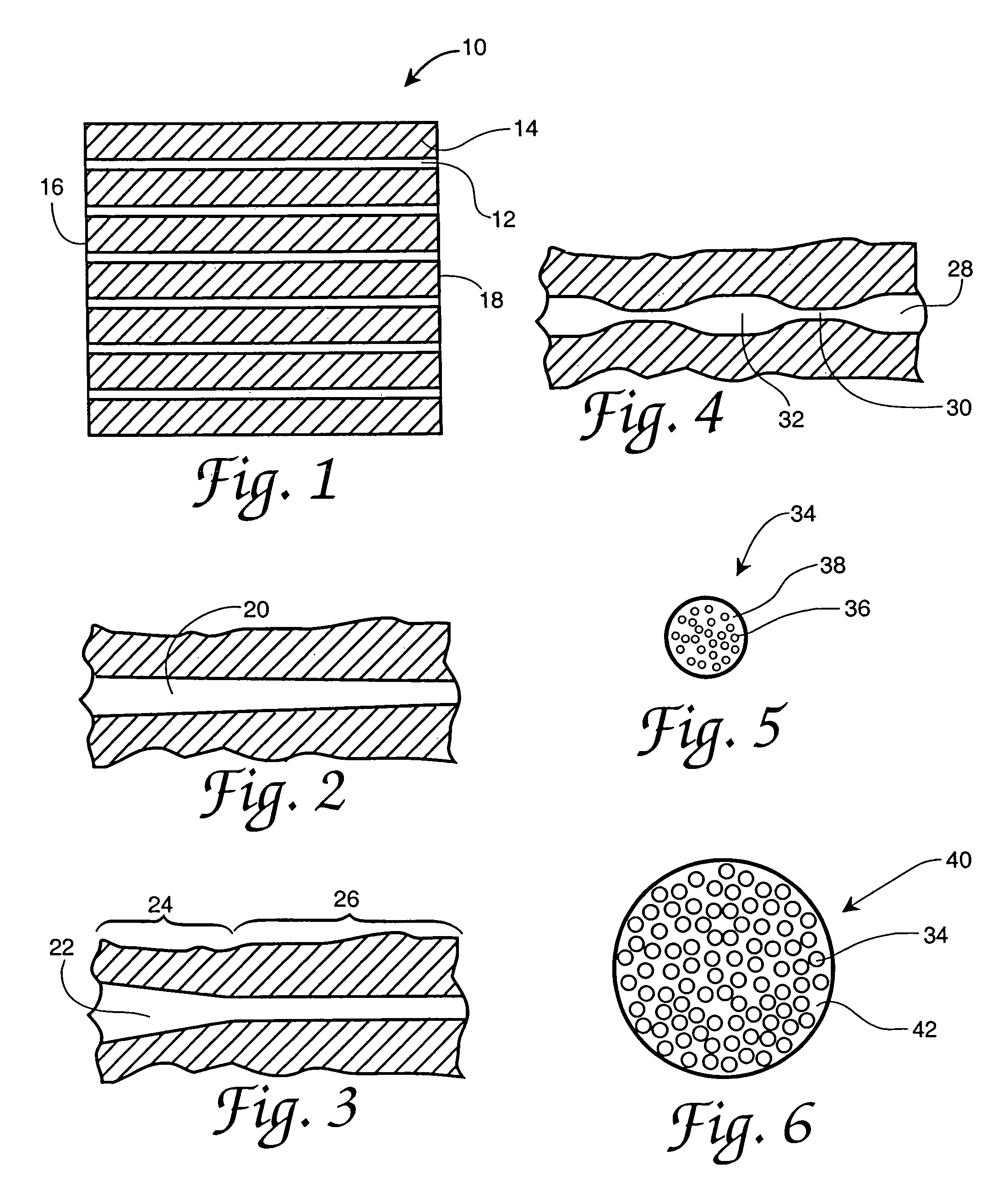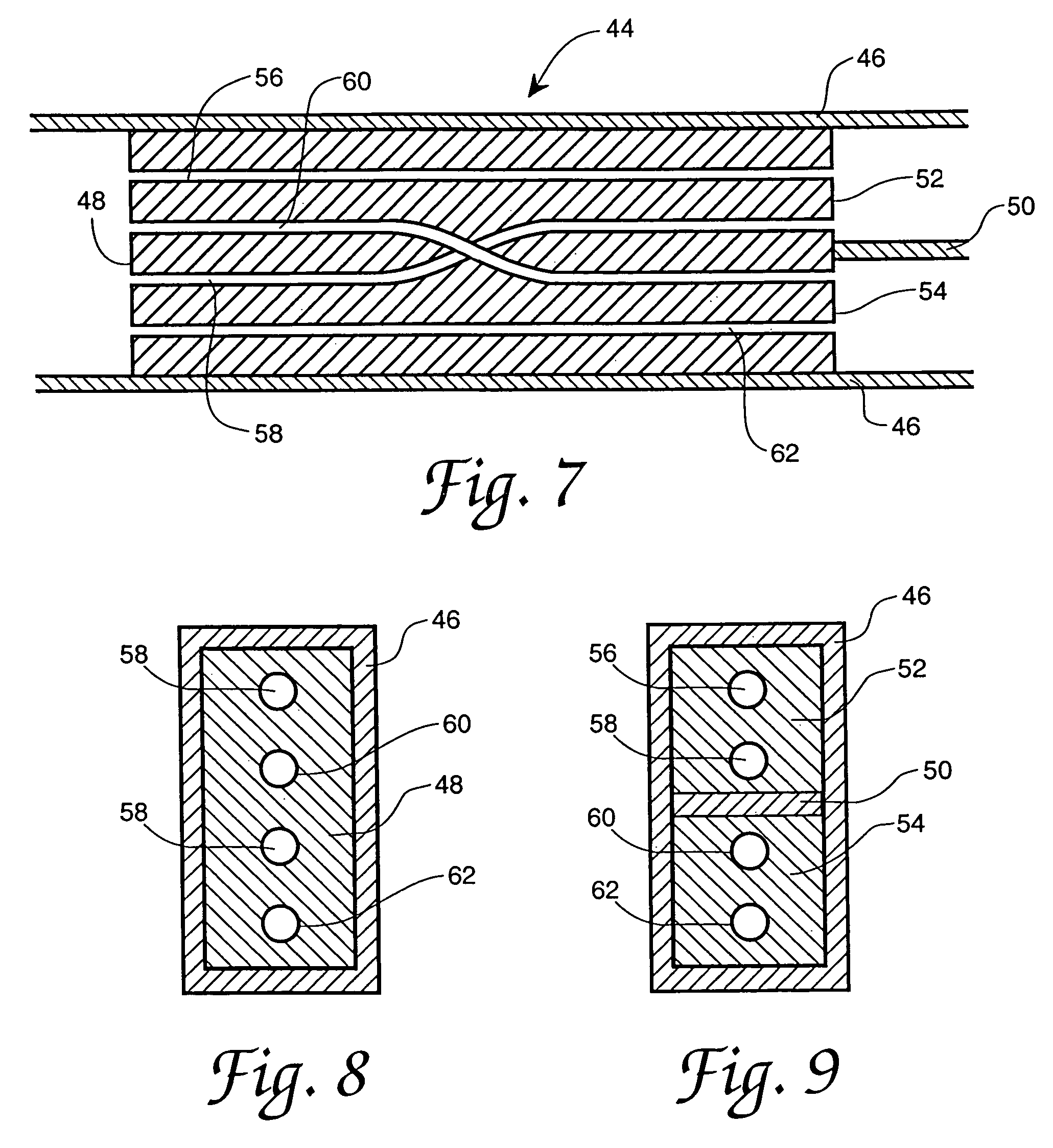Method of manufacture of separation devices
a technology of separation device and manufacturing method, which is applied in the direction of filtration separation, moving filter element filter, separation process, etc., can solve the problems of clogging of particulates, conventional rigid filter pores that do not have a precise and well-defined cross-sectional shape or size, and the distribution of porosity of conventional rigid filter pores, etc., to prevent the fabrication of non-rounded features, the effect of rapid and economical means
- Summary
- Abstract
- Description
- Claims
- Application Information
AI Technical Summary
Benefits of technology
Problems solved by technology
Method used
Image
Examples
Embodiment Construction
[0029]Referring now to the drawings, FIG. 1 illustrates a separation device 10 comprising a plurality of capillaries 12 embedded in a support material 14 and having an entrance face 16 and an outlet face 18. Device 10 is fabricated employing microtube technology, as disclosed by Hoffman, U.S. Pat. No. 5,011,566, issued Apr. 30, 1991. Briefly, this technology comprises placing a coating on a sacrificial fiber or fibers and then removing the fibers. The inner dimensions and contours of the capillaries will perfectly match the dimensions and contours of the fiber surfaces from which they were formed. In the separation devices of the present invention, capillary 12 can have any cross-section, including round, square, triangular, lobed, rectangular, polygonal and the like. For convenience, the material used to form capillary 12 will be referred to as “fiber”. The fiber can have any dimensions needed for the application as long as at least one cross-sectional dimension is in the range of ...
PUM
| Property | Measurement | Unit |
|---|---|---|
| thickness | aaaaa | aaaaa |
| thickness | aaaaa | aaaaa |
| thickness | aaaaa | aaaaa |
Abstract
Description
Claims
Application Information
 Login to View More
Login to View More - R&D
- Intellectual Property
- Life Sciences
- Materials
- Tech Scout
- Unparalleled Data Quality
- Higher Quality Content
- 60% Fewer Hallucinations
Browse by: Latest US Patents, China's latest patents, Technical Efficacy Thesaurus, Application Domain, Technology Topic, Popular Technical Reports.
© 2025 PatSnap. All rights reserved.Legal|Privacy policy|Modern Slavery Act Transparency Statement|Sitemap|About US| Contact US: help@patsnap.com



